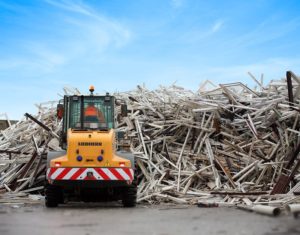
Chris Coxon, Head of Marketing at Eurocell plc, discusses how cleverly choosing building materials can boost sustainability in social housing developments…
It’s no secret that the UK is in the middle of a housing shortage, caused by years of failing to build enough homes. The shortage has become so severe that the Government has had to set aggressive building targets of 300,000 homes per year for at least the next decade to rectify the situation – an objective that only 12% of surveyors believe is achievable.
Integral to any strategy that even gets close to meeting that target is the social housing sector, which last year the government pledged to provide with an additional £2 billion a year of funding to build more affordable homes. However, with research suggesting this will only deliver 10% of the social and affordable homes actually needed, the government took further action to boost the country’s social housing stock publishing a major green paper in September 2018.
The paper proposes major reforms for social housing and enabling councils to build more affordable homes, establishing it is a “core priority” for the government. At the heart of this strategy sits a commitment to remove the stigma associated with social housing, highlighting its role as both safety net and springboard to home ownership.
Sustaining quality
While the government has set-out its own steps for removing this stigma, it’s clear that if this is to be achieved social housing must be seen as good quality. Preferably these homes should also be sustainable as this will generate the best opportunities to provide the good quality, affordable homes that are so desperately needed.
Broadly speaking ‘sustainable’ means producing houses that are designed to reduce their overall environmental impact, both during and after construction. Doing so will future-proof homes, reducing the carbon impact of both the material used in the build and the completed home, consequently making them more affordable to run for owners through enhanced energy efficiency.
As the social housing sector seeks to fulfil its role in addressing the UK’s housing shortage, it has typically delivered reasonable levels of sustainability in comparison to other areas of the construction sector. However, a 2017 report found that it was only half way towards the science based targets that would make a significant difference to homes carbon emissions and the impact building had on the environment. So, with a need to maintain an image of having a positive attitude towards sustainability and demonstrate a commitment to delivering carbon neutral homes, what extra steps can the sector take to improve its sustainability?
Evaluating the options
One area that can sometimes be overlooked when seeking to improve sustainability is the individual materials that are used in the build themselves. Yet this is something that can make a significant difference to how sustainable, and affordable, the build ultimately ends up being.
Take for instance the material options for windows and doors, which have been locked in an on-going battle in the fenestration sector. For many years, manufacturers of wood, aluminium and PVC-U windows have been locked in a fight to win over both specifiers and the UK’s army of homeowners.
In the main, it appears subjective but as the industry increasingly focuses on environmental and sustainability issues, all that might be set to change. And with factors such as energy efficiency having more of an impact on public perceptions of quality, it’s important to take a fresh look and see how competing materials fare in the environmental stakes.
In terms of environmental performance, there’s little distinction between the main door and window frame materials, with no specific material having an obvious advantage in the relevant standard impact categories. Some will argue that aluminium frames contribute to heat loss more than wood or PVC-U frames because of the inherent conductivity of metal, for example, but in general there is little to choose between each of them when it comes to performance, with A and A+ ratings largely the norm.
With the materials seemingly neck and neck, if the social housing sector is to improve its sustainability it’s clear that they need a fresh perspective on the issue if they are to achieve any sort of marginal gains. And this ‘gain’ can be found when evaluating the materials end of life, as this is where the differences begin to emerge.
Thinking outside the box
For instance, PVC-U is a very easy material to recycle and re-use, and the replacement window and door industry has an impressive record for recycling old frames and using them to make new ones.
Over 560,000 tonnes of what is referred to as ‘post-consumer’ material is recycled across Europe every year. Each time PVC-U is recycled, the proportion of additives (such as impact modifiers) in the mixture can be adjusted to ensure it keeps its strength. It actually gets stronger the first few times it’s recycled, which means PVC-U can be re-processed and used to make the same products it came from or for high-value, ‘upstream’ recycling.
When it comes to aluminium, like PVC-U, recycling rates are impressive, and it can also be recycled and used to make new window and door frames, again and again. However, the key difference lies in the amount of energy consumed (and emissions produced) to recycle each one. PVC-U is reprocessed at a modest 160-220 degrees centigrade compared to the 700-750 degrees centigrade or more required to melt down and recycle aluminium.
When evaluating the materials on this criteria it is timber that lags behind, as the fibres in wood break down immediately when it’s recycled. This means it can only be used to manufacture chipboard and other low-grade timber products or ‘downstream’ recycling. Although it can be converted into biomass fuel and burned to produce green energy, proportionately fewer wood frames are sent for recycling – with an estimated 50% ending up in landfill.
These small variances may seem trivial but as the social housing sector looks to continually improve its record on sustainability while boosting the UK’s affordable housing stock, they have the potential to make a very big difference. By adopting some ‘outside the box’ thinking the sector will see a world of possibilities exist for improving its sustainability.
Picture: Shaun Flannery/shaunflanneryphotography.com/ 31st January 2017, Merritt Plastics Ltd., Manners Avenue, Manners Industrial Estate, Ilkeston, DE7 8EF

